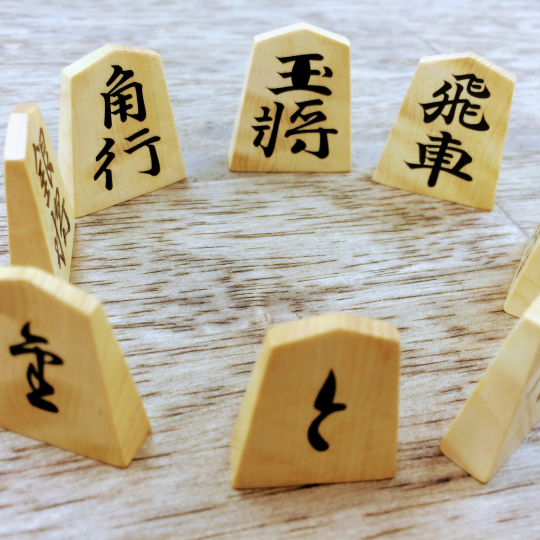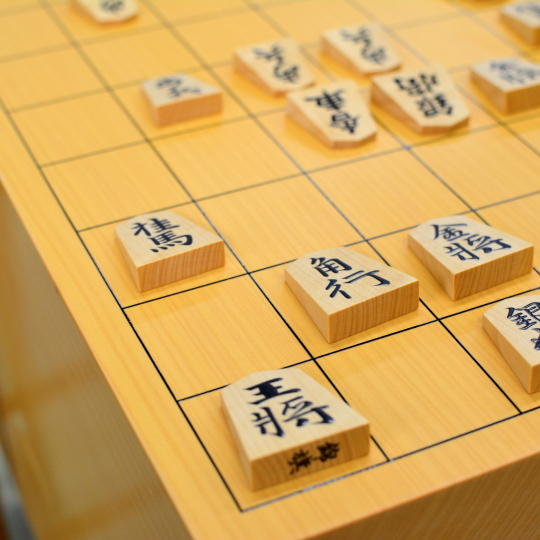What’s Shogi?

Shogi is a part of traditional Japanese culture.
Japanese shogi is imbued with Japanese culture.
Shogi is a game for two players using shogi pieces and a board. The players compete in accordance with a set of rules. While there are many different games that bear a certain resemblance to shogi around the world today, this description is confined to Japanese-style shogi.In Japanese-style shogi as in the styles of shogi in other countries, the object is to capture your opponent’s “gyoku” (king) more quickly than your opponent captures yours. There is one rule distinctive to Japan, however: the captured pieces can be used again by the player capturing them.
About reuse of captured pieces

The reuse of captured pieces is the biggest feature of Japanese-style shogi. A player who captures his (or her) opponent’s pieces can use them as his own pieces. This can be done because, in Japanese-style shogi both the player and his opponent use exactly the same pieces. This raises the question of how a player tells his pieces apart from those of his opponent. The pieces can be distinguished by turning the pointed part of the pentagonal shape toward the opponent. (Please see the photo.) The reuse of captured pieces expanded the possibilities of moves and made Japanese-style shogi much deeper. The captured pieces are called “mochigoma” and placed on the table to the side of the board.
History
TThe world has many games that resemble shogi such as chess, xiangqi (Chinese-style shogi,) and makruk (Thai-style shogi.) These games reportedly all originated in the game of chatoranga, which was played in ancient India. As that game spread to various countries, it was influenced by the history and culture in each. As a result, each country developed its own type of game from it.
t is thought that shogi was transmitted to Japan from the 7th to the 9th centuries. Once the game entered Japan, the board and pieces were modified in the Japanese style. The most important modification is the ability to use captured pieces as your own, which is said to be possible only in Japan. The current format using a board of 9 by 9 squares and 40 pieces reportedly dates from the second half of the 16th century. In the Edo period (1603 – 1867), the game received the support of the Tokugawa Shogunate, and a man named Ohashi Sokei became the first official meijin. * Meijin (master) is the title given to the best shogi player. From the first to the present one in 2015, there have been 19 meijin. The title is symbolic of the tradition and authority of the shogi world, and has been steadily carried on even over the interval of 400 years from the early part of the Edo period.
Additional information
There are eight types of shogi pieces. Shogi pieces are also said to represent treasures. Specifically:“Gyoku” is a precious jewel. “Kin” (gold) and “gin” (silver). “Kei” (cassia) is a tree with a noble fragrance. “Kyo” means “incense.” The names for the other pieces express the way they move. The game is a sort of mental sport in which each player tries to capture the other’s pieces first, using these eight types of pieces.

If there is anything we can help you with,or you have any questions,
please do not hesitate to contact us.